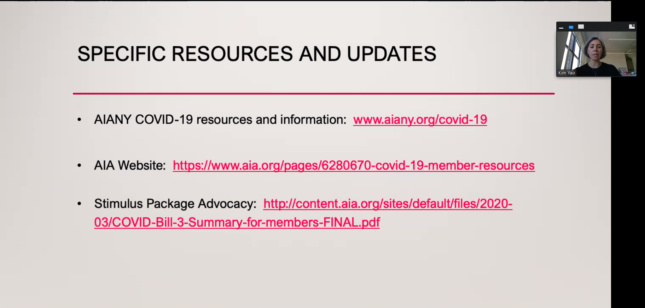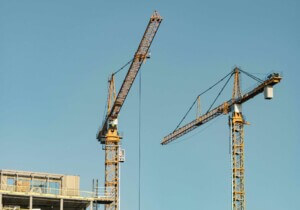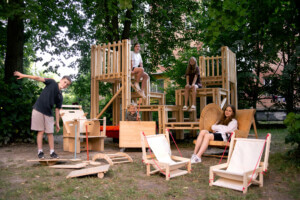This afternoon, the New York chapter of the American Institute of Architects (AIANY) hosted a webinar designed to explain what’s going on in New York City during the ongoing novel coronavirus (COVID-19) pandemic, how resources are being shared with the national chapter, and what architects can do to contribute.
In Town Hall: Coping with COVID-19 Together, Barry Bergdoll, president of New York’s Center for Architecture joined Ben Prosky (executive director of AIANY), Jessica Sheridan, (AIA director at-large), and Kim Yao (AIANY 2020 president) to discuss how the chapter is navigating these difficult times (moderated by Kavitha Mathew, AIANY leadership and engagement coordinator).
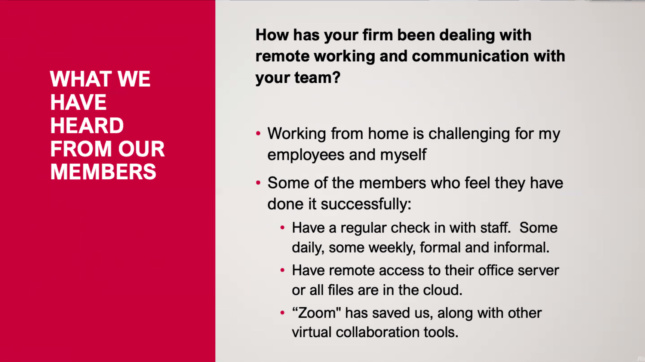
Most of the concerns raised and addressed by participants were practical ones. To start, AIANY staff is now working from home, like many of its members. Because of that, the Center for Architecture is closed for the time being and is working to move lectures and other events online for those who are self-isolating. Their K-12 education programming will also ramp up as well while schools are closed.
On the business side, Yao mentioned that they had reached out to 770 firm principals in the last few days—so far AIANY has spoken with over 300 of them and left messages for the rest. Their aim was to see how offices were moving to remote work, how principals and their staff were handling things, and software was being used. As one could probably guess, having to juggle nine-plus hours of Zoom meetings with familial duties, or being stuck home with no human interaction, is wearing thin on morale and many architects are growing increasingly stressed.
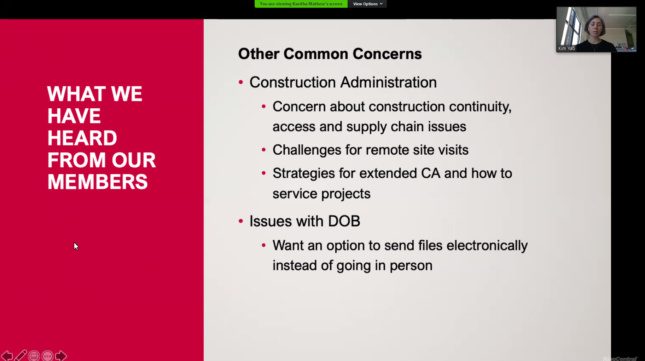
Compounding that stress is the payment issue; how are architects transitioning to digital checks and wire transfers, while avoiding the fees? Clients have also been slow to send their payments in many of the instances raised by town hall attendees, and the chapter is working to put together resources for getting paid digitally, and may hold a future webinar to help firms apply for local and federal loans in the meantime. Kermit Baker, the national AIA’s chief economist, is also working to put together an economic outlook for early next week to gauge the impact of coronavirus.
One elephant in the room, especially for the New York-minded attendees, was Governor Andrew Cuomo’s announcement this morning shutting down all “non-essential construction” across the state. That means job sites across New York State, except for affordable and homeless housing, hospitals, infrastructure projects, transportation, and power generation, have been shuttered for the time being. If construction sites are closed, will architects working on those projects still get paid? Prosky spoke on how they’re in conversation with the city’s Department of Design and Construction (DDC) to make sure firms are paid, but continuing work was an ongoing discussion. While the city was willing to contribute money to public projects during the 2008 recession, this time, it seems, they’re drawing a hard line and may soon start implementing severe cost-cutting measures citywide; the coronavirus crisis has already blown a $15 billion hole in the state’s budget and could cost the city over $6 billion. Still, the chapter noted they would continue to advocate for their members, though many ongoing projects could be scrapped.
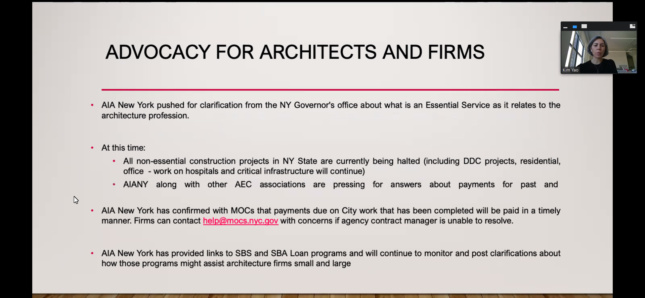
On a more uplifting note, many of the attendees wanted to know how they could contribute to combatting the spread of coronavirus, and mentioned that Pelli Clarke Pelli and a number of schools had begun 3D printing face shields for medical personnel. The AIA is currently working to coordinate between interested firms to help them more efficiently pool and distribute resources to those who most need them.
Managing construction administration and figuring out site visits, students looking for potential internships, and the ramping up of virtual continuing education programs were all touched upon as well, but the meeting was more for members to voice their concerns and let the AIA know where they should focus their attention. The AIANY is coordinating with its neighbors and the national chapter to figure out the best path forward, and in the meantime has put together a resource page for those looking for more support and updates at aiany.org/resources/covid-19-resources/.
